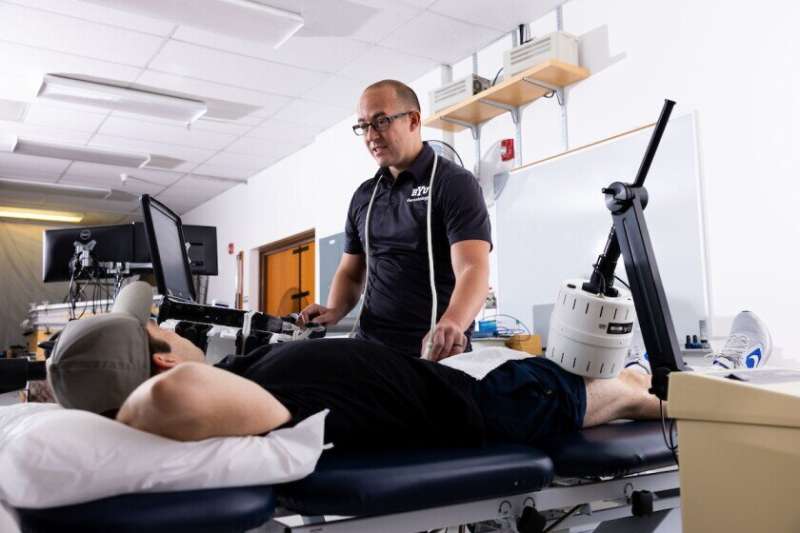Heat therapy can mimic some of the vascular benefits of exercise


Data consistently shows that exercise is key to well-being in nearly every facet of life; its positive impact is unquestioned. But what about when people, perhaps not by choice, need to sit on the sidelines for a while?
A group of researchers from Brigham Young University have found new details about mitigating negative effects of inactivity by using passive heat therapy, a practice of heating muscles for treatment purposes. Their research shows that this process practically eliminates a near 30% decline in artery health that happens when people, perhaps due to injury, become less physically active.
In essence, heat therapy preserves artery health for individuals with reduced physical activity as if they had continued exercising.
“Whenever people enter periods of low physical activity, their cardiovascular system and muscles respond by decreasing function and getting smaller,” said BYU exercise sciences professor Jayson Gifford. “This all contributes to an increased risk of cardiovascular disease. For injured people wearing casts, elderly populations, astronauts and even self-quarantined individuals—basically anyone in a movement-restricting situation—the risk of cardiovascular disease and muscle atrophy could potentially be lessened by passive heat therapy.”
The study, published recently in the Journal of Physiology, comes after Gifford, fellow exercise sciences professors Robert Hyldahl and Brad Nelson and four students examined 21 healthy subjects who experienced disuse of lower limbs over 10 days. Each study participant wore a movement-restricting knee brace, and half received daily 2-hour heat therapy on knee extensor muscles while the other half underwent a placebo treatment. Both groups were closely monitored for differences in vascular health, a term used for blood vessel well-being.
“Just by not moving for about two weeks, some college-age subjects’ arteries responded as if they were 55 or 60 years old instead of 20 years old,” said Gifford, speaking of those who received the placebo treatment. “This contrasted with little to no change in the vascular health of those treated with heat.”
The team used a technology called pulsed shortwave diathermy to conduct the passive heat therapy. These machines send out radio waves, which in turn heat the muscle. With the heating machine resting on top of patients in the muscle area being treated, the process can be a bit time-consuming but doesn’t cause pain or discomfort.
By examining vascular health and the overall well-being of subjects’ arteries before and after the therapy, Gifford and his team are equipped to raise awareness of something called endothelial function. Extremely important for regulating the health of the cardiovascular system, it releases chemicals that control blood clotting, immune function and vascular relaxation. With little physical activity comes decreased endothelial function, thus raising the risks of plaque buildup, blood clots, and heart attacks.
Detriments in endothelial function, like those seen with reduced physical activity, typically precede overt symptoms of cardiovascular disease by several years. Fortunately, the endothelium appears to respond well to many treatments, like exercise and heat therapy.
These risks motivate the team to find ways to help those feeling helpless in their ability to be physically active.
The researchers plan to expand their work to examine other methods of heat-based treatment. Seeing that the machinery they used is not broadly available, they will be measuring the effectiveness of more accessible heat therapy methods, including a future study looking at how sauna usage affects vascular health.
Source: Read Full Article